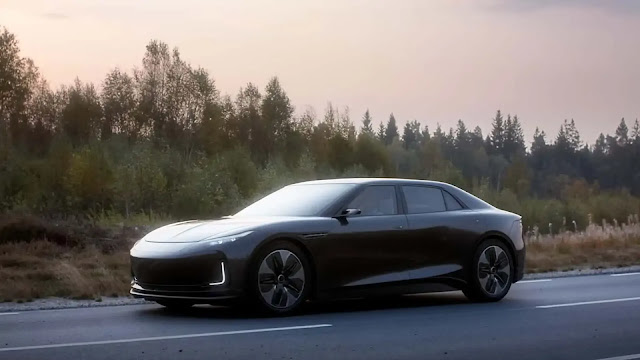Massive Cargo Ship Fire off Dutch Coast: Tragic Incident Involving 3,000 Cars, Including Electric Vehicles 1 death reported
In a devastating incident that has sent shockwaves through the maritime and automotive industries, the cargo ship "Fremantle Highway" caught fire while sailing off the coast of the Netherlands. This mammoth vessel was carrying a staggering cargo of nearly 3,000 cars, including some electric vehicles, on its journey from Germany to Egypt. The fire broke out late at night, with reports suggesting it might have originated from one of the electric vehicles on board.
According to Reuters, the crew valiantly attempted to extinguish the flames, but their efforts were futile, leading to a harrowing situation where seven crew members had to make the heart-wrenching decision to jump overboard to escape the rapidly spreading inferno. Tragically, one crew member lost their life in this devastating blaze, and several others sustained severe injuries, including burns, broken bones, and breathing problems. Rescuers acted swiftly, successfully evacuating all 23 crew members from the beleaguered ship.
The Dutch Coast Guard, responsible for handling the situation, stated that the fire seemed to have originated near an electric vehicle. However, the exact source of the blaze is yet to be confirmed, and the cause remains officially listed as "unknown" on their website. Reports from De Telegraaf indicate that among the 2,857 cars aboard the vessel, 25 were electric vehicles. Notably, Mercedes-Benz disclosed that they had approximately 350 of their cars on the ship at the time of the incident.
As of the latest update from the Dutch Coast Guard, the situation aboard the Fremantle Highway remains perilous, with the fire still raging. In a race against time, the rescue ship "Hunter" is playing a crucial role, maintaining the stricken vessel's position and steering it away from busy shipping lanes. This strategic measure allows authorities to formulate a plan to combat the blaze without jeopardizing the integrity of the ship or risking its sinking.
Firefighting efforts have proven to be exceptionally challenging, with Edwin Versteeg, a spokesperson for the Dutch Department of Waterways and Public Works, explaining that extinguishing the blaze has been arduous, partly due to the nature of the cargo on board. The ship was located approximately 17 miles north of the Dutch island of Ameland when the fire erupted, intensifying the urgency of the rescue mission.
The Fremantle Highway, registered in Panama, is managed by the esteemed Japanese ship leasing company Shoei Kisen, which is actively collaborating with authorities in handling this crisis. The ship, constructed in 2013, is designated as a vehicle carrier, boasting an impressive length of 200 meters (656 feet).
Regrettably, this is not the first time a cargo ship carrying automobiles has been engulfed in flames. In 2022, the Felicity Ace, sailing in the Atlantic Ocean, suffered a similar fate, sinking along with an estimated $401 million worth of vehicles from esteemed brands such as Volkswagen, Porsche, Bentley, Audi, and Lamborghini.
The ramifications of such incidents extend far beyond the immediate damage, and repercussions are often felt throughout the automotive industry. Lamborghini, for instance, was forced to halt Aventador production to replace the iconic supercars lost in the Felicity Ace tragedy.
As the world awaits further updates and investigation findings, the focus remains on saving the Fremantle Highway and minimizing the loss of lives and cargo. The tragic incident serves as a stark reminder of the hazards and challenges inherent in maritime operations and the importance of robust safety measures and crisis management protocols.
As the investigation progresses, we can only hope for swift and effective action to contain the fire and prevent further devastation to this colossal cargo ship and its valuable automotive cargo. The eyes of the world are on the courageous rescuers and experts working tirelessly to bring this calamitous situation under control and ensure the safety of all involved.



Comments